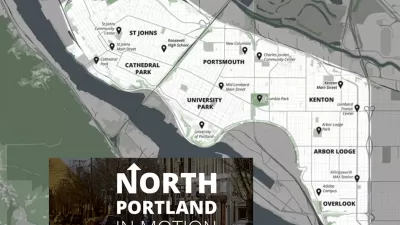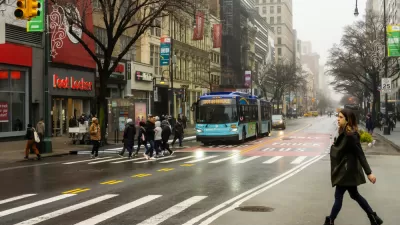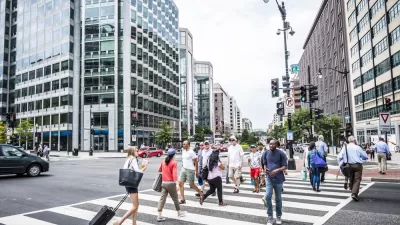Biking and walking are often assumed as two peas in a pod, when in fact it might be more helpful to think of them as apples and oranges.

Michael Andersen shares news of a study that reveals insight into a fundamental challenge facing the designing and building of alternative transportation infrastructure: pedestrian infrastructure is much more challenging to develop than bike infrastructure.
The proof is in Portland, according to Andersen: "Portland has a long way to go, but it’s one of the country’s best cities to bike in. Sad to say, it isn’t yet one of the country’s best cities to walk in."
Christopher Muhs—who wrote the study while an engineering grad student at Portland Statue University and working with PSU professor Kelly Clifton—"looked at various studies that found correlations between characteristics of cities and neighborhoods and the amount of biking and walking that happens in them — number of intersections per mile, for example, or the size in square feet of local retail stores."
That survey revealed key differences between bike and pedestrian infrastructure, including the greater difficulty in making pedestrian infrastructure investments that can actually influence mode choice. So for instance, directly from the study: "In three US studies, the magnitudes of the trip distance coefficient for walk mode choice were more than three times those of the corresponding coefficient for bicycling."
FULL STORY: Bike-friendliness and walk-friendliness are actually pretty different, study says

Planetizen Federal Action Tracker
A weekly monitor of how Trump’s orders and actions are impacting planners and planning in America.

Congressman Proposes Bill to Rename DC Metro “Trump Train”
The Make Autorail Great Again Act would withhold federal funding to the system until the Washington Metropolitan Area Transit Authority (WMATA), rebrands as the Washington Metropolitan Authority for Greater Access (WMAGA).

DARTSpace Platform Streamlines Dallas TOD Application Process
The Dallas transit agency hopes a shorter permitting timeline will boost transit-oriented development around rail stations.

Renters Now Outnumber Homeowners in Over 200 US Suburbs
High housing costs in city centers and the new-found flexibility offered by remote work are pushing more renters to suburban areas.

The Tiny, Adorable $7,000 Car Turning Japan Onto EVs
The single seat Mibot charges from a regular plug as quickly as an iPad, and is about half the price of an average EV.

Supreme Court Ruling in Pipeline Case Guts Federal Environmental Law
The decision limits the scope of a federal law that mandates extensive environmental impact reviews of energy, infrastructure, and transportation projects.
Urban Design for Planners 1: Software Tools
This six-course series explores essential urban design concepts using open source software and equips planners with the tools they need to participate fully in the urban design process.
Planning for Universal Design
Learn the tools for implementing Universal Design in planning regulations.
Municipality of Princeton
Roanoke Valley-Alleghany Regional Commission
City of Mt Shasta
City of Camden Redevelopment Agency
City of Astoria
Transportation Research & Education Center (TREC) at Portland State University
US High Speed Rail Association
City of Camden Redevelopment Agency
Municipality of Princeton (NJ)





























